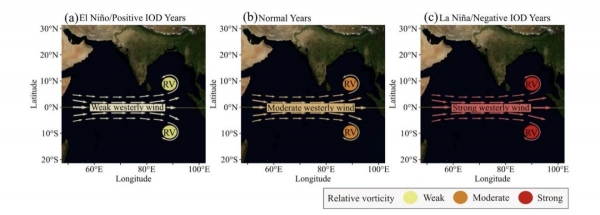El Niño-Southern Oscillation (ENSO), the climate pattern involving warming or cooling sea surface temperatures in the Pacific, has immense influence on the formation of tropical cyclones globally. A new study involving Florida Tech shows that in the Bay of Bengal, that influence is geographically confined, a discovery that should help extend the lead time of seasonal predictions for cyclones that form in that region.
“ENSO influence on Bay of Bengal cyclogenesis confined to low-latitudes,” published last month in the Nature journal npj Climate and Atmosphere Science, found that ENSO’s impact in the Bay of Bengal in the north Indian Ocean is confined to near-equatorial cyclones, with little to no impact on cyclones that form further away from the equator.
Historically, 40 percent of Bay of Bengal cyclones are near-equatorial cyclones. These storms can be extremely costly in terms of lives lost and damage done: A near-equatorial cyclone in November 2017 named Ockhi traveled over 1,200 miles and devastated parts of Sri Lanka and India with the loss of at least 218 people and $920 million in damages.
Continue reading at Florida Tech
Image via Florida Tech


